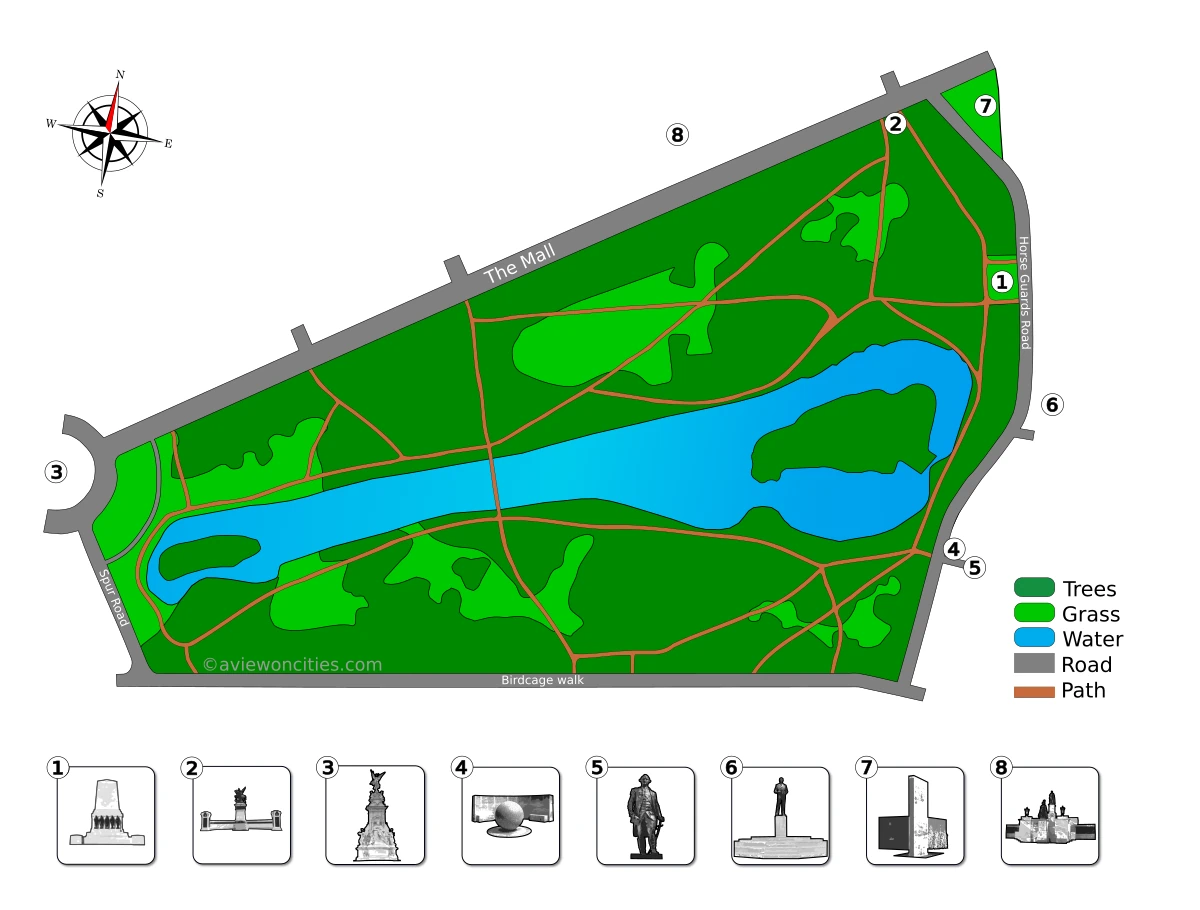London’s St James’s Park is the oldest Royal Park in the city and undoubtedly one of its most lovely. The park boasts beautiful flower beds, grassy open space and a lake that’s home to local waterfowl.
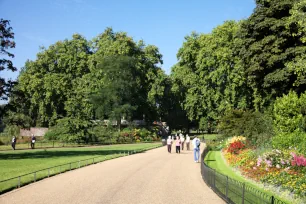
The thirty-six-hectare (90 acre) large park is surrounded by stately buildings, including two palaces.
The Park’s History
The land on which St James’s Park sits was the site of a leprosy hospital for women. The hospital was dedicated to James the Less, hence the name of the park. Henry VIII built St. James’s Palace on the site of the hospital and turned the adjoining marsh and meadowland into a royal ground for deer hunting and duck shooting.
King James I opened a menagerie with exotic animals, including crocodiles and an elephant, which was given more than four liters of wine every day. He also had a large aviary, which explains the name of the street that runs south of St. James’s Park, Birdcage Walk.
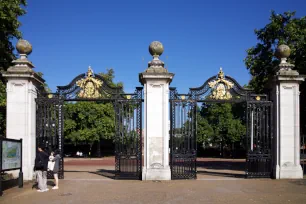
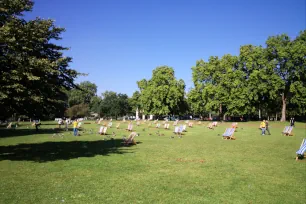
In the seventeenth century, King Charles II had the park laid out in a formal French style, mimicking the gardens of Versailles he had seen during his exile in France. It was then that the long, narrow lake was created out of a marsh. Charles II was also the first to open the park to the public.
The park’s current appearance is a result of a redesign in 1828, when architect John Nash carried out a modernization project. He made the park more romantic in style and revitalized the trees, lawns, and gardens.
The Park Today
St. James’s Park is one of the most meticulously maintained parks in London. There are many flower beds, and paved paths meander through the park. In the summer, during sunny spells, sunbathers relax in deck chairs on the groomed lawns.
Most visitors simply enjoy strolling through the park, watching the wildlife. The park provides habitats for a variety of fauna, in particular birds. The lake is home to fifteen different species of waterfowl, including pelicans, which were introduced to the park in the mid 1600s when the Russian ambassador gave a couple of these long-beaked birds as a present to Charles II.
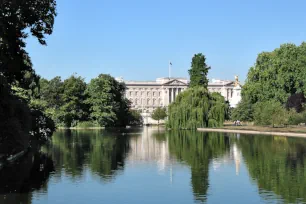
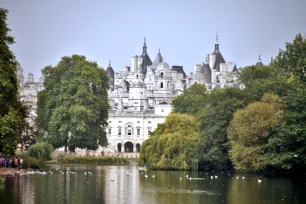
The park welcomes more than five million visitors per year and has become quite popular with the movie industry. The bridge across the lake is particularly popular and has featured in many movies. The bridge was built in the 1950s as a replacement for the less-practical Chinese-style bridge that was built as part of Nash’s redesign. There was also a Chinese pagoda from the same era, but unfortunately it burned down due to fireworks.
Royal Surroundings
From the bridge, you have a magnificent view over Buckingham Palace, where monarchs have resided since 1837. It is not the only palace around St. James’s Park: to the northeast, across the Mall, is the namesake St. James’s Palace.
The park is located in the heart of London’s political center, and there are many important sights and landmarks in the vicinity. From the park you can see the many towers from Whitehall and the Horse Guards Parade, and famous sights like Trafalgar Square, Westminster Abbey and the former Palace of Westminster are all nearby. So is the Victoria Memorial, a large monument in front of Buckingham Palace.
Monuments

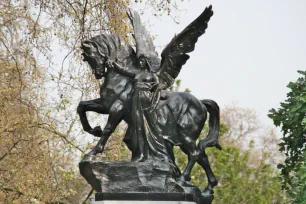
There are also a couple of monuments on the grounds of St. James’s Park. On the eastern fringe of the park is the Guards Division Memorial ![]() . It commemorates the soldiers of the Guards regiments who lost their lives during the World Wars. The memorial appropriately overlooks the Horse Guards parade ground.
. It commemorates the soldiers of the Guards regiments who lost their lives during the World Wars. The memorial appropriately overlooks the Horse Guards parade ground.
On the northern-eastern edge of the park, near the Mall, is the Royal Artillery South Africa Memorial ![]() , with a large statue of an allegorical figure of Peace controlling a winged horse, representing war. The memorial commemorates the Royal artillery soldiers who died during the Boer Wars.
, with a large statue of an allegorical figure of Peace controlling a winged horse, representing war. The memorial commemorates the Royal artillery soldiers who died during the Boer Wars.
There are also several interesting monuments in the vicinity of St. James’s Park. The most impressive is undoubtedly the Queen Victoria Memorial ![]() , situated near the west corner of the park.
, situated near the west corner of the park.
On the other side of the park, just across the street on the east side, is the Bali Bombings Memorial ![]() , a granite globe that was unveiled in 2006 to commemorate the 202 people who died in the bombings of 2002. Right next to it, on the steps towards King Charles Street, stands the statue of Robert Clive
, a granite globe that was unveiled in 2006 to commemorate the 202 people who died in the bombings of 2002. Right next to it, on the steps towards King Charles Street, stands the statue of Robert Clive ![]() , the first British Governor of the Bengal Presidency (a province of India). A bit more to the north, right next to the Horse Guards Parade, stands a statue of the Earl Mountbatten
, the first British Governor of the Bengal Presidency (a province of India). A bit more to the north, right next to the Horse Guards Parade, stands a statue of the Earl Mountbatten ![]() , which was unveiled here in 1983. Walk further north towards the northeast edge of the park to see the modern National Police Memorial
, which was unveiled here in 1983. Walk further north towards the northeast edge of the park to see the modern National Police Memorial ![]() , which was created in 2005 to honor police officers killed on duty. Finally, across the Mall from the north side of the park stands a memorial to King George VI and his consort Queen Elizabeth
, which was created in 2005 to honor police officers killed on duty. Finally, across the Mall from the north side of the park stands a memorial to King George VI and his consort Queen Elizabeth ![]() . The statue of King George VI was created in 1955 by the Scottish sculptor William McMillan. The statue of the Queen Mother is more recent; it was created in 2009 by another Scottish sculptor: Philip Jackson.
. The statue of King George VI was created in 1955 by the Scottish sculptor William McMillan. The statue of the Queen Mother is more recent; it was created in 2009 by another Scottish sculptor: Philip Jackson.
Map of St. James’s Park
